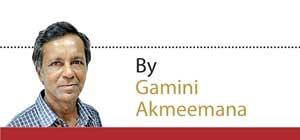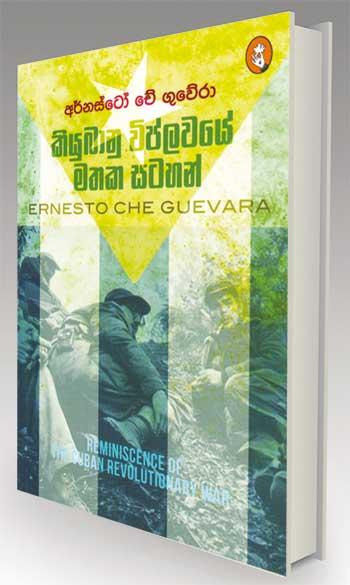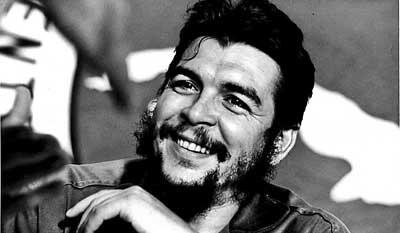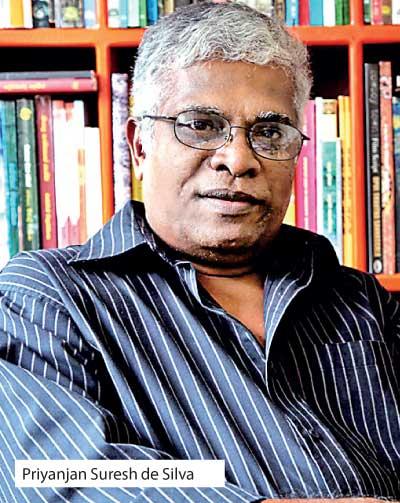28 Sep 2020 - {{hitsCtrl.values.hits}}
If you ask those who love to read to name one 20th century author whose appeal hasn’t waned with the passage  of time, they are bound to name Ernest Hemingway, George Orwell, Albert Camus and D. H. Lawrence.
of time, they are bound to name Ernest Hemingway, George Orwell, Albert Camus and D. H. Lawrence.
If you narrowed it down and asked them to name their favourite Latin American authors, we are bound to get names such as novelist Gabriel Garcia Marquez (still living) and poet Pablo Neruda.
Surprise: Though not a writer of fiction or poetry, Argentinian-born Cuban revolutionary Ernesto ‘Che’ Guevara should be in anyone’s list, not because of political bias but due to the sheer volume and compelling power of his writing. In his short life, Ernesto Guevara wrote voluminously, and an online search revealed 30 titles still in print based on his writings, no mean feat for a man who didn’t consider himself to be an author in the first place. Just how much he wrote is remarkable considering that he did not have access even to a typewriter as he travelled.
Early on, he decided that his life’s calling was to be a revolutionary and change the world. But it’s evident that he loved to write. Long after he was killed in Bolivia and the message of the Cuban revolution was abandoned as a  game changer in the politics of not just Latin America, Asia and Africa but all over the world, the appeal of Che’s writings runs as deep as the appeal of the enduring, cigar-smoking legend.
game changer in the politics of not just Latin America, Asia and Africa but all over the world, the appeal of Che’s writings runs as deep as the appeal of the enduring, cigar-smoking legend.
"Reminiscences of the Cuban Revolution tells the story of a small guerrilla band led by Fidel Castro, his brother Raul and Che, from their disastrous landing in Cuba in 1956 till the defeat of the Batista regime in 1959"
Amongst his writings published in book form after his death, works such as the Motorcycle Diaries, The ‘Bolivian Diary’ and ‘the African Dream:Diaries of the Revolutionary War in the Congo’ remain most popular. His ‘Reminiscences of the Cuban Revolutionary War’ is another significant work, and has now been translated into Sinhala by journalist Priyanjan Suresh de Silva as ‘Cubanu Viplavaye Mathaka Satahan.’
Che’s books remain popular because his writing isn’t didactic or abstruse. If he had lived long enough to listen to Bob Marley’s songs, he would have agreed with the Jamaican singer’s belief that his songs should be simple enough to be understood by children. Even if Che didn’t go that far (he saw people as adults waiting to be transformed by ideology into the ‘new man’) he decided to keep his writing as simple as possible, whereas many of his revolutionary predecessors have no universal appeal and would be difficult and boring to read today except to researchers and die-hard ideologues. Like any sensible prophet, Ernesto Guevara wrote with everyone in mind.
Reminiscences of the Cuban Revolution tells the story of a small guerrilla band led by Fidel Castro, his brother Raul and Che, from their disastrous landing in Cuba in 1956 till the defeat of the Batista regime in 1959. These three short years were hard and eventful. Che’s narrative powers are evident in almost every page as he recounts the travails of guerrilla warfare – starvation, dehydration, disease, wounds and death, betrayal by fellow guerrillas as well as the people they meet as they search for hideouts.
He writes with both wry humour and complete honesty, recounting how traitors were executed and how the  guerrillas ate cat meat. He remembers Jack London during a difficult moment. What is remarkable is that, while his record shows he was ruthless enough in his revolutionary worldview (he supervised a number of post-revolutionary executions in Cuba) he saw people as very much human, not as expendable numbers or merchandise as it happens in armies or in the corporate world. He could have been a good novelist if he wanted that, but he chose another path in life. But a novelist’s understanding of character comes through again and again in his writing.
guerrillas ate cat meat. He remembers Jack London during a difficult moment. What is remarkable is that, while his record shows he was ruthless enough in his revolutionary worldview (he supervised a number of post-revolutionary executions in Cuba) he saw people as very much human, not as expendable numbers or merchandise as it happens in armies or in the corporate world. He could have been a good novelist if he wanted that, but he chose another path in life. But a novelist’s understanding of character comes through again and again in his writing.
This book takes us back in time to another world, when people believed that the world could be changed for the better through revolution. It takes us too, to a pre-digital world where armed people fighting each other were driven, sometimes overwhelmed, by their own inner fears and not by technology. Batista had an air force but it wasn’t decisive against a small band of determined guerrillas. There were no heat-seeking devices or drones to seek out men hiding in jungles.
"Amongst his writings published in book form after his death, works such as the Motorcycle Diaries, The ‘Bolivian Diary’ and ‘the African Dream:Diaries of the Revolutionary War in the Congo’ remain most popular"
 While the Cuban army was certainly much bigger and better armed, it lacked the drive and dedication of Fidel Castro’s followers. And yet, the final victory could not have been taken for granted. It’s tempting here to make a comparison with Sri Lanka’s Eelam Wars. While the two sides were not equal in numbers, the LTTE was a large and well-armed organization using modern technology. In fact, its leader considered his forces to be a conventional army, not a guerrilla force. He has evidently not read any of Che’s writings, or the outcome of that conflict could well have been different.
While the Cuban army was certainly much bigger and better armed, it lacked the drive and dedication of Fidel Castro’s followers. And yet, the final victory could not have been taken for granted. It’s tempting here to make a comparison with Sri Lanka’s Eelam Wars. While the two sides were not equal in numbers, the LTTE was a large and well-armed organization using modern technology. In fact, its leader considered his forces to be a conventional army, not a guerrilla force. He has evidently not read any of Che’s writings, or the outcome of that conflict could well have been different.
That leads to another important aspect of the Cuban revolutionary war. The guerrillas treated their enemy decently, treating the wounds of captured soldiers and handing them over to the Red Cross, excepting those cases where the sheer brutality or the level of treason of a given captive left no room for leniency. This is in stark contrast to what happened here. For most Sri Lankans, the name Ernesto Che Guevara evokes someone who advocated armed struggle against the state (thanks to those who hijacked his name and image back in 1971). But they evidently overlooked how humane one should be while undertaking such a struggle.
The book is priced at Rs. 620
27 Nov 2024 3 hours ago
27 Nov 2024 4 hours ago
27 Nov 2024 4 hours ago
27 Nov 2024 5 hours ago
27 Nov 2024 5 hours ago